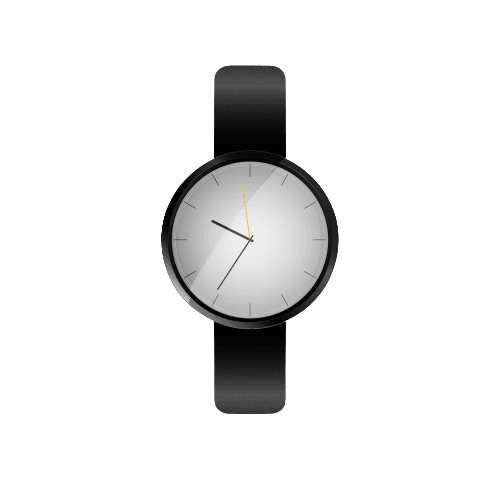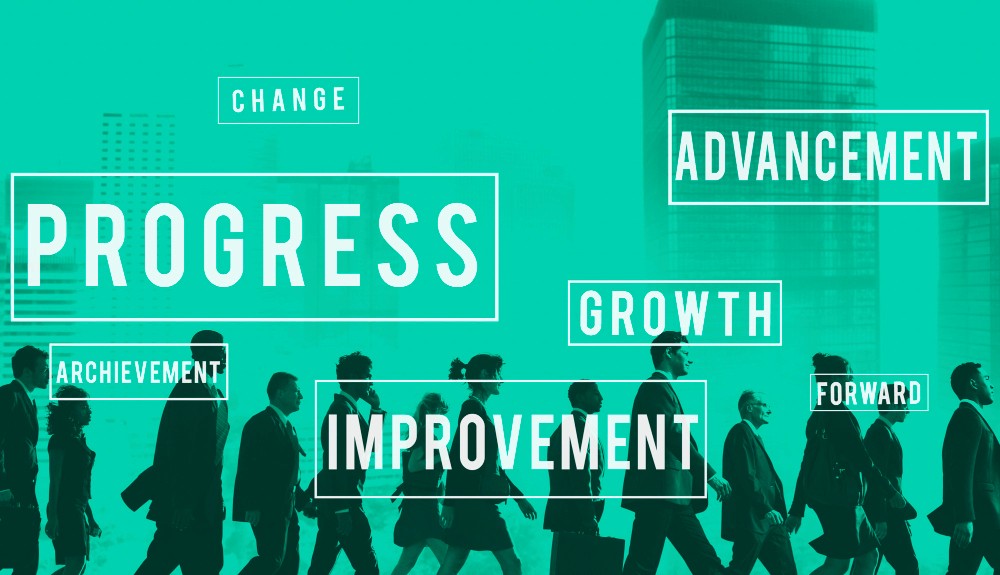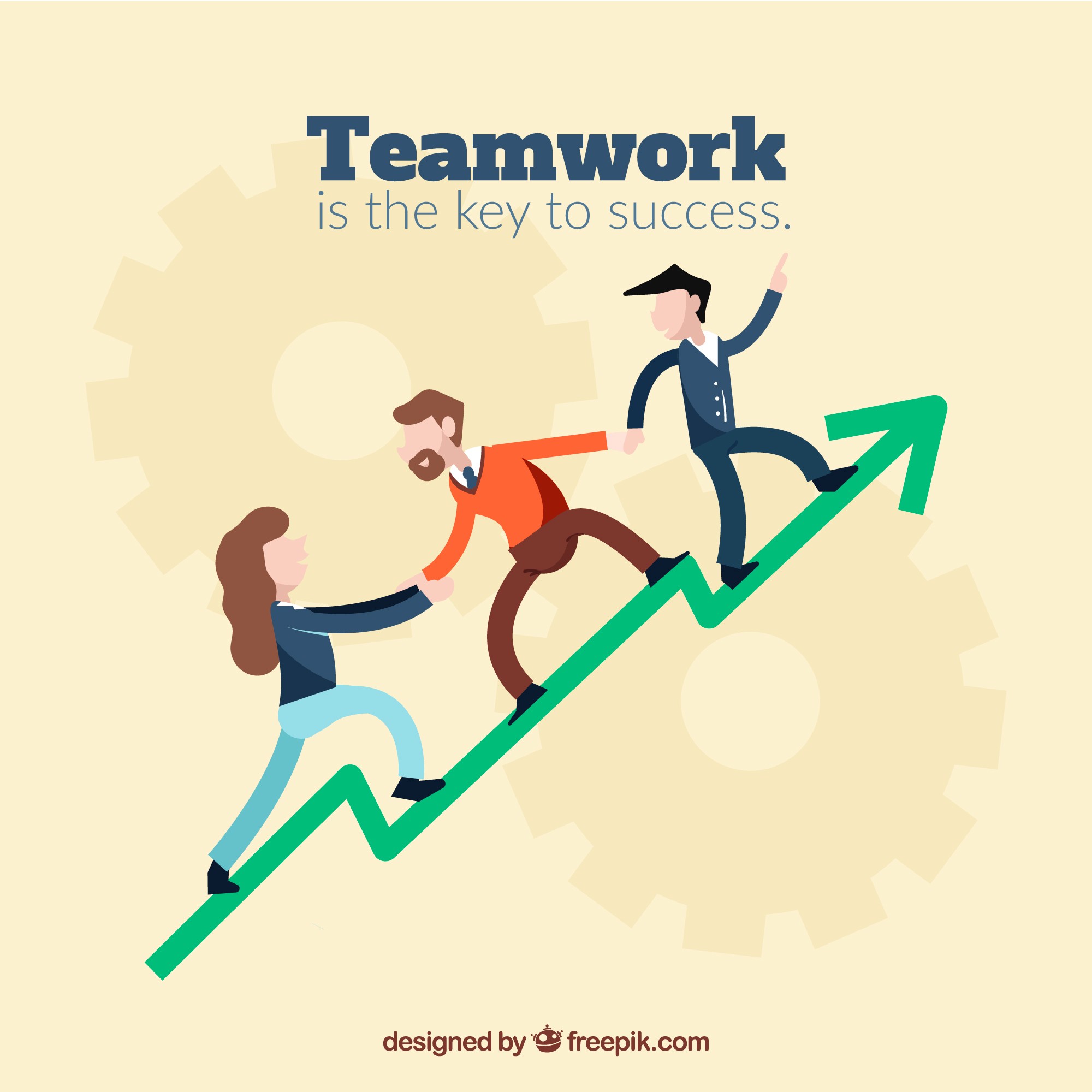Mid Phase
Finding Balance: A Profound Guide to Work-Life Harmony for Mid-Career Professionals

Team NxtClue
|
8 mins
|
Sep 1, 2024

0:00/1:34
Don't have enough time to read?
Listen

Finding Balance: A Profound Guide to Work-Life Harmony for Mid-Career Professionals
Imagine this: You’re deep into your career—years of experience under your belt, a growing list of responsibilities, and perhaps a team that looks up to you. On the surface, it seems like you’ve got it all figured out. But behind the scenes, there’s a different story. The long hours are starting to take a toll, both physically and emotionally. Your personal life feels like it’s slipping through your fingers, overshadowed by endless meetings, tight deadlines, and the constant pressure to perform. How did work become everything? And how can you find that elusive balance that everyone talks about?
If this sounds familiar, you’re not alone. Many mid-career professionals struggle to maintain a healthy work-life balance. As responsibilities grow and career aspirations heighten, the lines between work and personal life blur. The good news is that achieving work-life harmony is possible, even in demanding careers. It requires mindful planning, intentional choices, and a commitment to prioritize what truly matters. Let’s explore how you can find balance and thrive both professionally and personally.
Strategies for Achieving Work-Life Balance
Does This Sound Like You?
Meet Sameer. He’s been working as a Senior Product Manager for over a decade. While he enjoys his job and is proud of his career achievements, he feels constantly overwhelmed by his workload. He’s struggling to find time for his family, hobbies, and even basic self-care. Sameer realizes that he needs to make a change to avoid burnout and find a sustainable balance between his work and personal life. Like Sameer, many mid-career professionals are searching for ways to balance their career ambitions with their personal well-being.
If you’re nodding along, don’t worry—you’re not alone. Achieving work-life balance is a journey, not a destination, and there are strategies you can implement to create a more harmonious life. Here’s how to balance work and life as a mid-career professional and find a deeper sense of fulfillment.
Key Steps to Find Work-Life Harmony
1. Redefine What Success Means to You
One of the biggest challenges in finding work-life balance is the traditional definition of success. For many mid-career professionals, success is often measured by promotions, salary increases, and professional accolades. However, this narrow view can lead to neglecting other aspects of life that contribute to overall well-being and happiness.
Solution: Take time to redefine what success means to you. Consider all aspects of your life—career, family, health, personal growth, and happiness. Understand that true success is about finding fulfillment in both your professional and personal life.
Tip:
“Create a vision board or journal to explore your goals and aspirations beyond your career. Visualizing a more balanced definition of success can help you set more meaningful priorities and align your actions with your values.”
2. Set Boundaries and Learn to Say No
Setting boundaries is crucial for maintaining a healthy work-life balance. Without clear boundaries, work can easily spill over into personal time, leading to stress and burnout. Learning to say no to additional tasks or responsibilities that don’t align with your priorities is key to preserving your well-being.
Solution: Establish clear boundaries between work and personal life. Communicate these boundaries to your colleagues and manager, and be firm about your limits. Practice saying no to tasks or commitments that don’t align with your priorities or values.
Tip:
“Use time-blocking techniques to schedule dedicated time for work and personal activities. Treat personal time as sacred—just like a work meeting—and resist the urge to let work encroach on it.”
3. Prioritize Self-Care and Well-Being
Self-care is not a luxury; it’s a necessity for maintaining balance and preventing burnout. Prioritizing self-care helps you recharge, manage stress, and maintain physical and mental health. Without it, even the most passionate professionals can experience burnout and decreased productivity.
Solution: Make self-care a non-negotiable part of your routine. Incorporate activities that promote relaxation, physical health, and mental well-being, such as exercise, meditation, hobbies, or spending time with loved ones. Remember, taking care of yourself is essential for taking care of others.
Tip:
“Schedule regular breaks throughout your day to step away from work and recharge. Use these breaks for stretching, walking, deep breathing, or any activity that helps you relax and reset.”
4. Embrace Flexibility and Adaptability
Work-life balance isn’t about strict separation but about flexibility and adaptability. Understanding that balance looks different for everyone and can change over time allows you to adapt to different situations and needs.
Solution: Embrace a flexible approach to work-life balance. Recognize that some days will require more focus on work, while others may allow for more personal time. Adapt your schedule and priorities as needed to maintain overall harmony.
Tip:
“Use flexible work arrangements, if available, to create a schedule that works best for you. Whether it’s remote work, flexible hours, or compressed workweeks, find a setup that supports your well-being.”
5. Foster a Supportive Work Environment
A supportive work environment plays a significant role in achieving work-life balance. An organization that values employees’ well-being and encourages balance can make it easier to manage work and personal responsibilities.
Solution: Advocate for a supportive work culture within your organization. Share your experiences and suggest initiatives that promote work-life balance, such as wellness programs, flexible work policies, or mental health resources. Engage with colleagues to create a culture of mutual support and understanding.
Tip:
“Initiate conversations with your manager and HR about work-life balance initiatives. Propose ideas like ‘No Meeting Fridays’ or ‘Wellness Wednesdays’ to promote a healthier work culture.”
6. Practice Mindfulness and Be Present
Mindfulness is the practice of being present and fully engaged in the moment. Practicing mindfulness helps reduce stress, increase focus, and enhance well-being. It’s a powerful tool for managing work-life balance by helping you stay grounded and centered.
Solution: Incorporate mindfulness practices into your daily routine. Start your day with a mindfulness meditation, practice deep breathing during stressful moments, or use mindful walking to clear your mind and connect with your surroundings.
Tip:
“Set aside a few minutes each day for mindfulness exercises. Use apps like Headspace or Calm to guide you through meditation or mindfulness practices.”
7. Delegate and Empower Others
As a mid-career professional, you may feel the need to take on everything yourself to prove your capabilities. However, delegation is a crucial skill for achieving work-life balance and developing leadership potential.
Solution: Learn to delegate tasks and responsibilities to others, especially those that can be handled by your team. Empower your colleagues to take ownership of their work and provide opportunities for them to grow and develop. Delegation not only lightens your load but also builds trust and collaboration within your team.
Tip:
“Identify tasks that can be delegated and match them with team members’ strengths and development areas. Provide clear instructions and support, but give them the autonomy to handle the tasks independently.”
8. Reflect Regularly and Adjust Your Approach
Achieving work-life balance is an ongoing process that requires regular reflection and adjustment. What works today may not work tomorrow, and your needs and priorities will evolve over time. Regular reflection helps you stay aligned with your goals and make necessary adjustments to maintain balance.
Solution: Set aside time for regular reflection on your work-life balance. Assess how well you’re balancing your professional and personal responsibilities and identify areas for improvement. Be willing to adjust your approach as needed to maintain harmony.
Tip:
“Consider keeping a work-life balance journal to document your experiences, insights, and adjustments. This can help you track your progress and identify patterns or triggers that affect your balance.”
Conclusion
Balancing work and life as a mid-career professional is a profound journey that requires intentional choices, mindful planning, and a commitment to prioritize what truly matters. By redefining success, setting boundaries, prioritizing self-care, embracing flexibility, fostering a supportive work environment, practicing mindfulness, delegating tasks, and reflecting regularly, you can achieve work-life harmony and find a deeper sense of fulfillment in both your professional and personal life.
Ready to find balance and thrive in all areas of your life? Start implementing these strategies today, and remember—work-life balance is not about perfection but about creating a life that feels rich, meaningful, and fulfilling.
Finding Balance: A Profound Guide to Work-Life Harmony for Mid-Career Professionals
Imagine this: You’re deep into your career—years of experience under your belt, a growing list of responsibilities, and perhaps a team that looks up to you. On the surface, it seems like you’ve got it all figured out. But behind the scenes, there’s a different story. The long hours are starting to take a toll, both physically and emotionally. Your personal life feels like it’s slipping through your fingers, overshadowed by endless meetings, tight deadlines, and the constant pressure to perform. How did work become everything? And how can you find that elusive balance that everyone talks about?
If this sounds familiar, you’re not alone. Many mid-career professionals struggle to maintain a healthy work-life balance. As responsibilities grow and career aspirations heighten, the lines between work and personal life blur. The good news is that achieving work-life harmony is possible, even in demanding careers. It requires mindful planning, intentional choices, and a commitment to prioritize what truly matters. Let’s explore how you can find balance and thrive both professionally and personally.
Strategies for Achieving Work-Life Balance
Does This Sound Like You?
Meet Sameer. He’s been working as a Senior Product Manager for over a decade. While he enjoys his job and is proud of his career achievements, he feels constantly overwhelmed by his workload. He’s struggling to find time for his family, hobbies, and even basic self-care. Sameer realizes that he needs to make a change to avoid burnout and find a sustainable balance between his work and personal life. Like Sameer, many mid-career professionals are searching for ways to balance their career ambitions with their personal well-being.
If you’re nodding along, don’t worry—you’re not alone. Achieving work-life balance is a journey, not a destination, and there are strategies you can implement to create a more harmonious life. Here’s how to balance work and life as a mid-career professional and find a deeper sense of fulfillment.
Key Steps to Find Work-Life Harmony
1. Redefine What Success Means to You
One of the biggest challenges in finding work-life balance is the traditional definition of success. For many mid-career professionals, success is often measured by promotions, salary increases, and professional accolades. However, this narrow view can lead to neglecting other aspects of life that contribute to overall well-being and happiness.
Solution: Take time to redefine what success means to you. Consider all aspects of your life—career, family, health, personal growth, and happiness. Understand that true success is about finding fulfillment in both your professional and personal life.
Tip:
“Create a vision board or journal to explore your goals and aspirations beyond your career. Visualizing a more balanced definition of success can help you set more meaningful priorities and align your actions with your values.”
2. Set Boundaries and Learn to Say No
Setting boundaries is crucial for maintaining a healthy work-life balance. Without clear boundaries, work can easily spill over into personal time, leading to stress and burnout. Learning to say no to additional tasks or responsibilities that don’t align with your priorities is key to preserving your well-being.
Solution: Establish clear boundaries between work and personal life. Communicate these boundaries to your colleagues and manager, and be firm about your limits. Practice saying no to tasks or commitments that don’t align with your priorities or values.
Tip:
“Use time-blocking techniques to schedule dedicated time for work and personal activities. Treat personal time as sacred—just like a work meeting—and resist the urge to let work encroach on it.”
3. Prioritize Self-Care and Well-Being
Self-care is not a luxury; it’s a necessity for maintaining balance and preventing burnout. Prioritizing self-care helps you recharge, manage stress, and maintain physical and mental health. Without it, even the most passionate professionals can experience burnout and decreased productivity.
Solution: Make self-care a non-negotiable part of your routine. Incorporate activities that promote relaxation, physical health, and mental well-being, such as exercise, meditation, hobbies, or spending time with loved ones. Remember, taking care of yourself is essential for taking care of others.
Tip:
“Schedule regular breaks throughout your day to step away from work and recharge. Use these breaks for stretching, walking, deep breathing, or any activity that helps you relax and reset.”
4. Embrace Flexibility and Adaptability
Work-life balance isn’t about strict separation but about flexibility and adaptability. Understanding that balance looks different for everyone and can change over time allows you to adapt to different situations and needs.
Solution: Embrace a flexible approach to work-life balance. Recognize that some days will require more focus on work, while others may allow for more personal time. Adapt your schedule and priorities as needed to maintain overall harmony.
Tip:
“Use flexible work arrangements, if available, to create a schedule that works best for you. Whether it’s remote work, flexible hours, or compressed workweeks, find a setup that supports your well-being.”
5. Foster a Supportive Work Environment
A supportive work environment plays a significant role in achieving work-life balance. An organization that values employees’ well-being and encourages balance can make it easier to manage work and personal responsibilities.
Solution: Advocate for a supportive work culture within your organization. Share your experiences and suggest initiatives that promote work-life balance, such as wellness programs, flexible work policies, or mental health resources. Engage with colleagues to create a culture of mutual support and understanding.
Tip:
“Initiate conversations with your manager and HR about work-life balance initiatives. Propose ideas like ‘No Meeting Fridays’ or ‘Wellness Wednesdays’ to promote a healthier work culture.”
6. Practice Mindfulness and Be Present
Mindfulness is the practice of being present and fully engaged in the moment. Practicing mindfulness helps reduce stress, increase focus, and enhance well-being. It’s a powerful tool for managing work-life balance by helping you stay grounded and centered.
Solution: Incorporate mindfulness practices into your daily routine. Start your day with a mindfulness meditation, practice deep breathing during stressful moments, or use mindful walking to clear your mind and connect with your surroundings.
Tip:
“Set aside a few minutes each day for mindfulness exercises. Use apps like Headspace or Calm to guide you through meditation or mindfulness practices.”
7. Delegate and Empower Others
As a mid-career professional, you may feel the need to take on everything yourself to prove your capabilities. However, delegation is a crucial skill for achieving work-life balance and developing leadership potential.
Solution: Learn to delegate tasks and responsibilities to others, especially those that can be handled by your team. Empower your colleagues to take ownership of their work and provide opportunities for them to grow and develop. Delegation not only lightens your load but also builds trust and collaboration within your team.
Tip:
“Identify tasks that can be delegated and match them with team members’ strengths and development areas. Provide clear instructions and support, but give them the autonomy to handle the tasks independently.”
8. Reflect Regularly and Adjust Your Approach
Achieving work-life balance is an ongoing process that requires regular reflection and adjustment. What works today may not work tomorrow, and your needs and priorities will evolve over time. Regular reflection helps you stay aligned with your goals and make necessary adjustments to maintain balance.
Solution: Set aside time for regular reflection on your work-life balance. Assess how well you’re balancing your professional and personal responsibilities and identify areas for improvement. Be willing to adjust your approach as needed to maintain harmony.
Tip:
“Consider keeping a work-life balance journal to document your experiences, insights, and adjustments. This can help you track your progress and identify patterns or triggers that affect your balance.”
Conclusion
Balancing work and life as a mid-career professional is a profound journey that requires intentional choices, mindful planning, and a commitment to prioritize what truly matters. By redefining success, setting boundaries, prioritizing self-care, embracing flexibility, fostering a supportive work environment, practicing mindfulness, delegating tasks, and reflecting regularly, you can achieve work-life harmony and find a deeper sense of fulfillment in both your professional and personal life.
Ready to find balance and thrive in all areas of your life? Start implementing these strategies today, and remember—work-life balance is not about perfection but about creating a life that feels rich, meaningful, and fulfilling.
0:00/1:34
Don't have enough time to read?
Listen


8 mins
Mid Phase
Finding Balance: A Profound Guide to Work-Life Harmony for Mid-Career Professionals

Team NxtClue
|
Sep 1, 2024
Copyright © 2024 NxtClue | All Rights Reserved

I May Not Be the Menu, But I Can Still Guide You – I Know Some Shortcuts!
With us
Decision is yours
Without us

Copyright © 2024 NxtClue | All Rights Reserved

I May Not Be the Menu, But I Can Still Guide You – I Know Some Shortcuts!
With us
Decision is yours
Without us

Related Blogs
Related Blogs

I May Not Be the Menu, But I Can Still Guide You – I Know Some Shortcuts!
With us
Decision is yours
Without us

Copyright © 2024 NxtClue | All Rights Reserved

